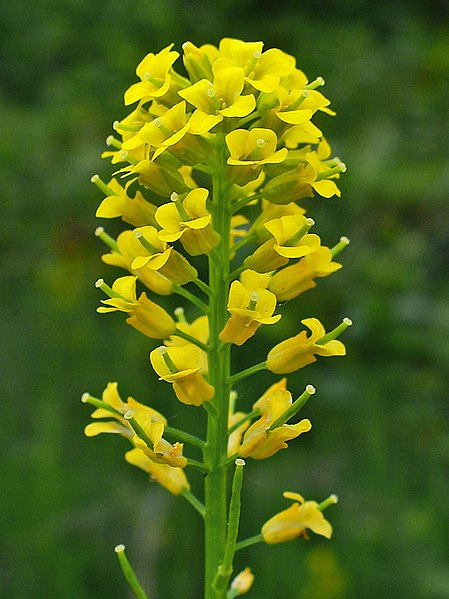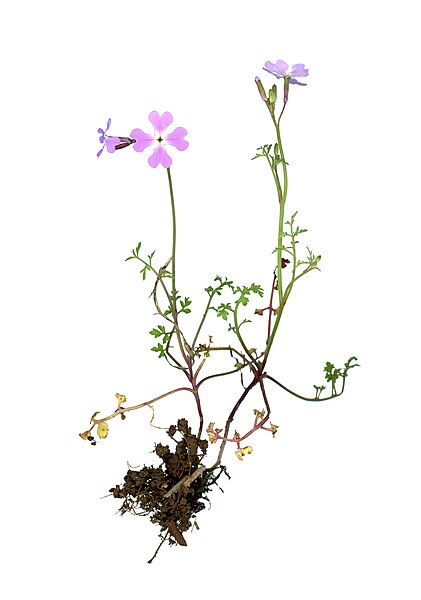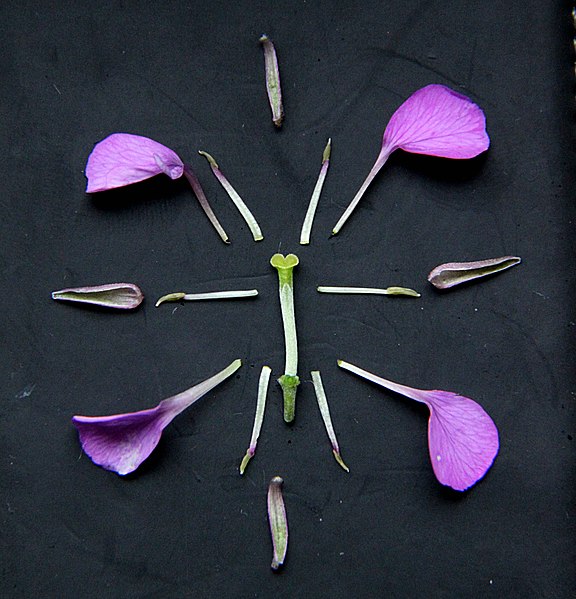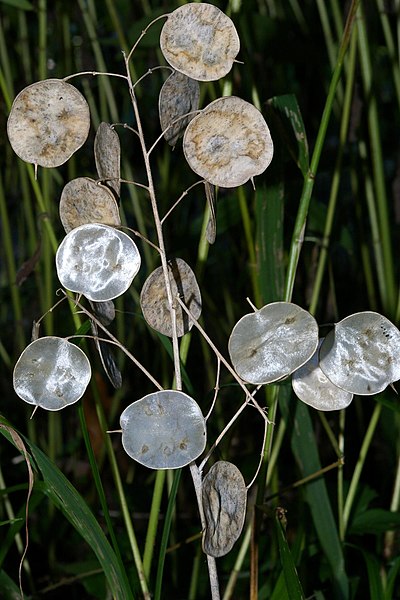Brassicaceae or Cruciferae is a medium-sized and economically important family of flowering plants commonly known as the mustards, the crucifers, or the cabbage family. Most are herbaceous plants, while some are shrubs. The leaves are simple, lack stipules, and appear alternately on stems or in rosettes. The inflorescences are terminal and lack bracts. The flowers have four free sepals, four free alternating petals, two shorter free stamens and four longer free stamens. The fruit has seeds in rows, divided by a thin wall.
Brassicaceae
Ricotia lunaria
Typical floral diagram of a Brassicaceae (Erysimum "Bowles' Mauve")
Lunaria annua with dry walls of the fruit
Petals are modified leaves that surround the reproductive parts of flowers. They are often brightly colored or unusually shaped to attract pollinators. All of the petals of a flower are collectively known as the corolla. Petals are usually accompanied by another set of modified leaves called sepals, that collectively form the calyx and lie just beneath the corolla. The calyx and the corolla together make up the perianth, the non-reproductive portion of a flower. When the petals and sepals of a flower are difficult to distinguish, they are collectively called tepals. Examples of plants in which the term tepal is appropriate include genera such as Aloe and Tulipa. Conversely, genera such as Rosa and Phaseolus have well-distinguished sepals and petals. When the undifferentiated tepals resemble petals, they are referred to as "petaloid", as in petaloid monocots, orders of monocots with brightly colored tepals. Since they include Liliales, an alternative name is lilioid monocots.

Tetrameric flower of a primrose willowherb (Ludwigia octovalvis) showing petals and sepals
A tulip's actinomorphic flower with three petals and three sepals, that collectively present a good example of an undifferentiated perianth. In this case, the word "tepals" is used.
Tubular-campanulate corolla, bearing long points and emergent from tubular calyx (Brugmansia aurea, Golden Angel's Trumpet, family Solanaceae).
Pelargonium peltatum, the Ivy-leaved Pelargonium : its floral structure is almost identical to that of geraniums, but it is conspicuously zygomorphic








